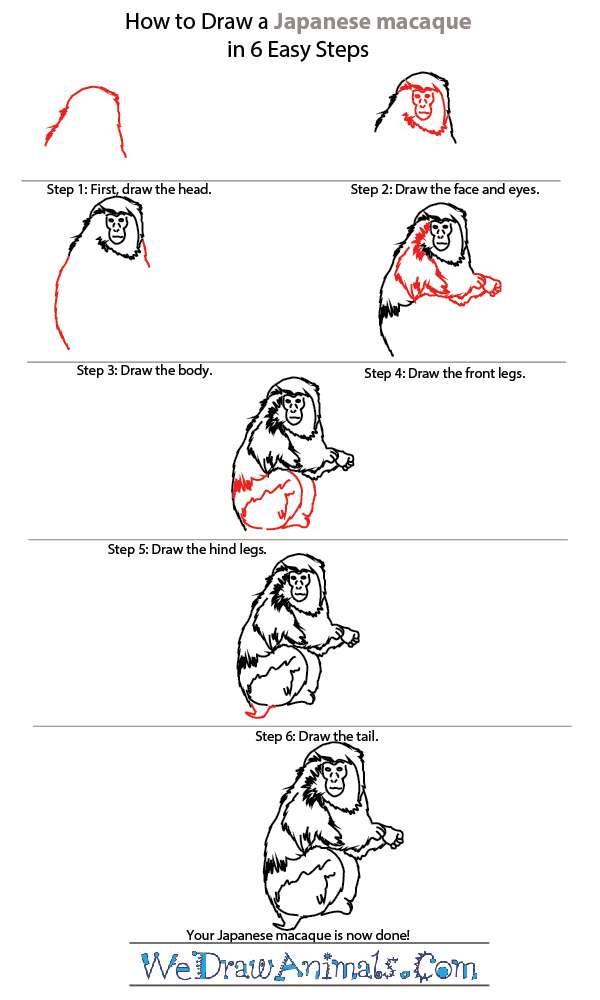In this quick tutorial you'll learn how to draw a Japanese Macaque in 6 easy steps - great for kids and novice artists.
The images above represent how your finished drawing is going to look and the steps involved.
Below are the individual steps - you can click on each one for a High Resolution printable PDF version.
At the bottom you can read some interesting facts about the Japanese Macaque.
Make sure you also check out any of the hundreds of drawing tutorials grouped by category.
How to Draw a Japanese Macaque - Step-by-Step Tutorial
Step 1: Okay, begin by drawing a furry dome shape for the head.
Step 2: Draw a curved half circle for the face and add detail. Nose, mouth, and eyes!
Step 3: This japanese macaque is looking great! Draw a long, curved line for the back!
Step 4: Awesome, let's move on to the hands and the fur surrounding the chest.
Step 5: Now let's move on to the hind legs. Make a curved, loop shape and follow this shape with fur.
Step 6: Perfect, now draw a small, hooked shape for the tail. Did you know the Japanese macaque is also called the Snow Monkey and found mainly in Japan?!
Interesting Facts about the JAPANESE MACAQUE
The Japanese Macaque is a member of the monkey family and the scientific term for them is Macaca fuscata. Another common name for this animal is Old World Monkey or Snow Monkey. They spend most of their time on the ground and are native to Japan. It is the most northern living primate animal in the world and the only one with such a cold habitat.
Did you know?
- This species can be almost 2 feet tall.
- They have tails less than 4 inches.
- The animal can weigh over 25 pounds.
- This species can live in temperatures as low as -4 degrees Fahrenheit.
- They travel on all 4 limbs.
- This species can swim up to 200 feet across bodies of water.
- This species can live up to 32 years old.
They’ve brownish grey long hair on their bodies, short tail, and red naked face. They travel mostly by crawling but also in jumping and swimming. Their social structure consists of a hierarchy, but they can leave at any time, and even be a member of several groups simultaneously. However, the longer that a member belongs to a group, the higher is status can be.







